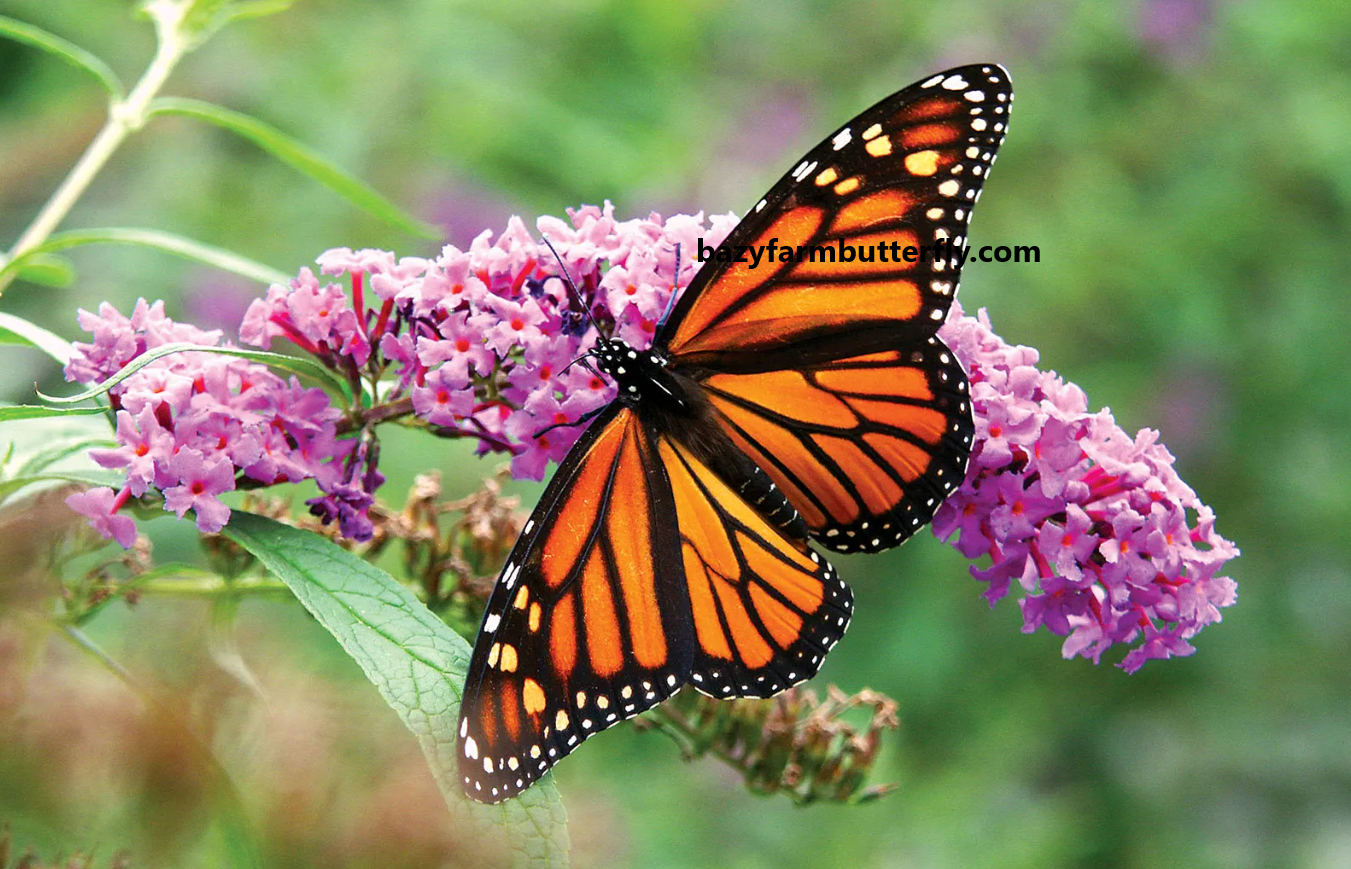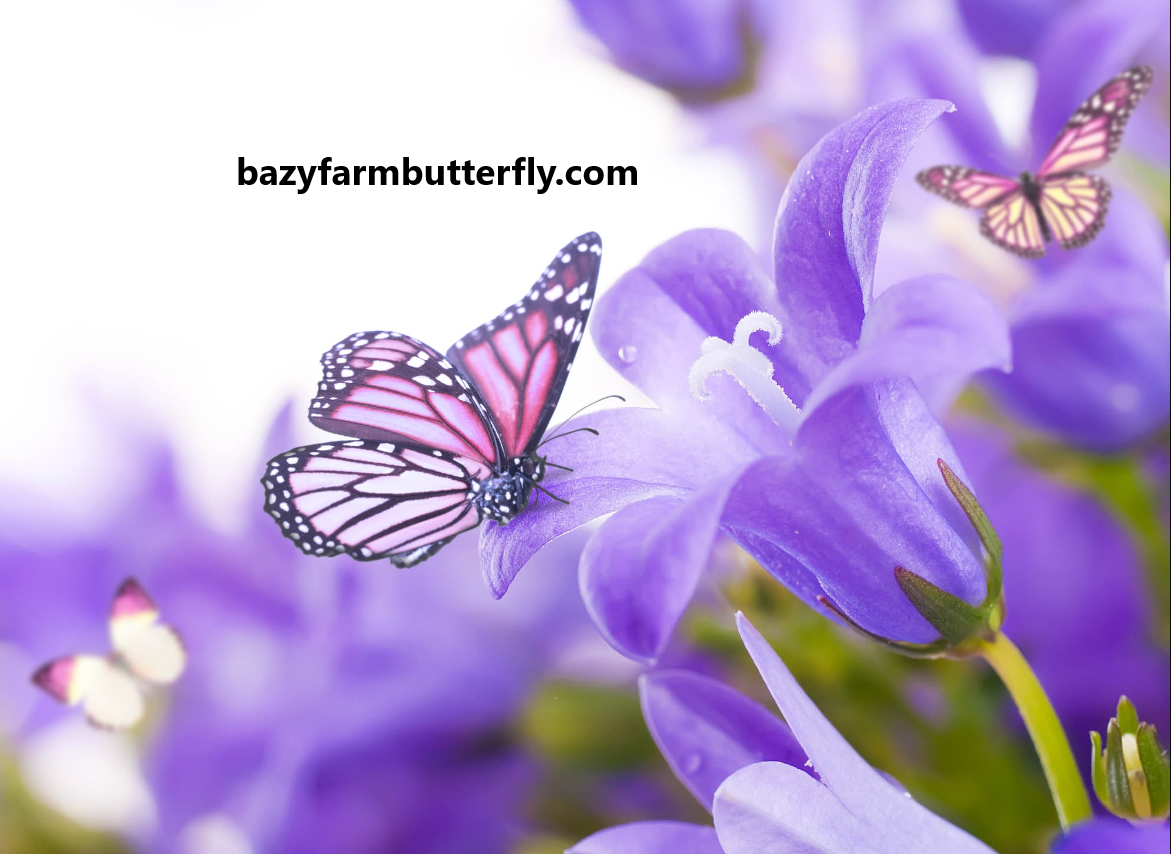Butterflies are one of nature’s most beautiful creations, with their intricate patterns and vibrant colors. However, have you ever stopped to wonder why they are called butterflies? The answer is trickier than you would think. In fact, there are several theories surrounding the origin of the name. In this article, Bazy Farm will explore the different theories and try to unravel the mystery of why butterflies are called butterflies.
The Origin of the Name

There are many theories about the origin of the name butterfly. One theory is that the name comes from the Old English word “Butterfleye,” which means “butterfly.” This word is believed to have been coined because of the buttery-yellow color of some species of butterflies, such as the Brimstone butterfly.
Another theory suggests that the name butterfly comes from the behavior of some species of butterflies. Butterflies were often seen hovering around milk churns or butter churns, and their fluttering movements resembled the churning of butter. This led to the name “butterfly.”
Why are Butterflies Called Butterflies?

The origin of the name “butterfly” has been a topic of debate among etymologists for centuries. Let’s take a closer look at some of the theories:
Theory 1: Butterflies are Named for the Color of their Excrement
One theory suggests that butterflies are called butterflies because of the color of their excrement. Old Dutch had the term “boterschijte,” which translates to “butter sh*t.” When butterflies undergo metamorphosis, their first excrement, called “meconium,” is brightly colored, often yellow or orange. Therefore, it is possible that the name “butterfly” originated from this association with the color of their excrement.
Theory 2: The Name is a Genteelism
Another theory suggests that the name “butterfly” is a genteelism. The term was designed to avoid mentioning the fact that the butterfly is so-called because of what its excrement looks like. The German word for butterfly, “boterschitt,” is very similar to the Dutch term mentioned in Theory 1. Therefore, it is possible that the name was altered to make it sound more pleasant.
Theory 3: The Name is of Obscure Signification
The name “butterfly” is of obscure signification. The Old English term for butterfly was “buttorfleoge,” which combines the words “butter” and “fly.” However, the meaning behind this combination of words is not clear. One theory suggests that the name is based on the old notion that insects consume butter or milk that is left uncovered. Another theory suggests that the name comes from the belief that witches disguised themselves as butterflies.
The Mythical Origins of the Name

The Ancient Greeks and Romans
The name “butterfly” has its roots in ancient Greece and Rome. The Greeks called the butterfly “psyche,” which means “soul” or “mind.” They believed that butterflies were the souls of the dead and that they carried messages from the afterlife.
The Romans also believed that butterflies were associated with the soul. They called them “papilio,” which means “butterfly” or “moth.” They believed that the butterfly was a symbol of the soul leaving the body.
The Middle Ages
During the Middle Ages, butterflies were associated with the Virgin Mary. They were called “mariposa,” which means “Mary’s rose.” They were seen as a symbol of the soul’s journey to heaven.
The Modern Era
In the modern era, the name “butterfly” became more widely used. The word “butterfly” is believed to have come from the Old English word “butorfleoge,” which means “butterfly.” The origin of the word is unclear, but it may have come from the idea that butterflies were attracted to butter or milk.
The Evolution of the Name
Over time, the name “butterfly” has evolved to include a variety of different species. There are over 20,000 species of butterflies and moths, and each one has its own unique characteristics.
In some languages, the name for a butterfly is still associated with the soul. In Spanish, for example, the word for butterfly is “mariposa,” which comes from the Latin “mariposita,” which means “little soul.”
The Anatomy of a Butterfly
To understand why butterflies are called butterflies, we must first understand their anatomy. Butterflies have four wings, which are covered in tiny scales. These scales are responsible for the intricate patterns and colors on the wings. The wings are attached to the thorax, which is the middle part of the butterfly’s body. The head contains the eyes, antennae, and mouthparts.
The Life Cycle of a Butterfly
The life cycle of a butterfly is a fascinating process that involves four stages: egg, caterpillar, pupa, and adult butterfly. The butterfly lays its eggs on a plant, and when the egg hatches, a caterpillar emerges. The caterpillar then feeds on the plant and grows rapidly. After a period of time, the caterpillar forms a chrysalis or pupa, inside which it undergoes a metamorphosis. Finally, an adult butterfly emerges from the chrysalis.
The Importance of Butterflies
Butterflies play an essential role in the ecosystem. They are pollinators, which means they help to transfer pollen from one plant to another, aiding in the reproduction of many plant species. They also serve as food for birds, bats, and other predators, helping to maintain the balance of the food chain.
Butterfly Conservation
Unfortunately, many species of butterflies are threatened with extinction due to habitat loss, climate change, and other factors. To conserve these beautiful creatures, it is important to protect their habitats and raise awareness about their importance.
Conclusion
In conclusion, the origin of the name “butterfly” is not entirely clear. It may have been derived from the Old English word “buttorfleoge” or from the behavior of some species of butterflies around milk or butter churns. Regardless of its origin, the name has become synonymous with these delicate and fascinating creatures. Butterflies play an essential role in the ecosystem, and it is our responsibility to protect and conserve them for future generations.
Read more:

